So, you’ve got yourself an iPhone 13, and just when you’re about to dive into its awesomeness, you hit a wall: iPhone 13 locked to owner. Ugh, we’ve all been there. Whether you bought it second-hand, or you’re just dealing with some glitch, it’s super frustrating. But don’t sweat it; there are fixes for days. This article’s got the low-down on why this happens and how to get your shiny gadget back in action, whether it’s the Pro, Max, or Mini you’re wrestling with. Trust us, it’s simpler than you think.
What Causes an iPhone 13 to Lock to Its Owner?
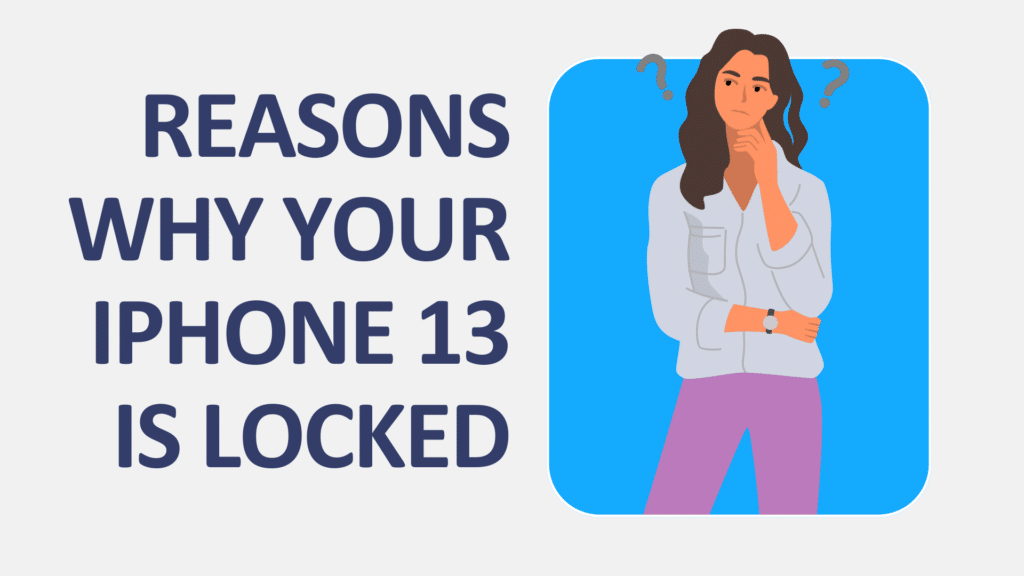
Got an iPhone 13 and hit a snag with the whole locked to owner thing? We get it—it can be a drag. Maybe you’re dealing with some iCloud drama, bought a used phone, or just plain forgot your iCloud password. Whatever it is, don’t worry. This article’s got you covered with all the why’s and how’s, from past owners who forgot to log out to the dicey situation of accidentally buying a hot phone. We’re breaking down what’s up so you can get back to enjoying your iPhone without any more headaches.
iCloud Activation Issues
When setting up an iPhone, Apple’s iCloud Activation Lock plays a pivotal role in security. However, it can be the very reason why you find an iPhone 13 locked to owner. It’s a protective measure, ensuring that only the rightful owner can access the device, especially after a factory reset. If not deactivated, the phone remains inaccessible to new users.
Resetting a Purchased Second-Hand iPhone
So, you’ve snagged a deal and bought a second-hand iPhone. But, if you hit the reset button yourself without the prior owner’s proper sign-out, you might end up with the iPhone 13 locked to owner dilemma. Always ensure a clean slate before personalizing your new-to-you device.
Previous Owner’s iCloud Oversight
Imagine this: you’re thrilled with your new iPhone, but alas! The previous owner forgot to sign out of their iCloud. This oversight can leave the iPhone 13 locked to owner, a little hiccup in your tech journey but one that’s usually solvable with some communication.
Forgotten iCloud Credentials After Reset
You love your iPhone device, but what if you forget your iCloud password and opt for a reset? Here’s the catch: if you don’t have the right credentials after resetting, you’ll find your the locked to owner message on your screen. It’s a common pitfall, but luckily, Apple offers ways to recover or reset your password.
Accidentally Buying a Stolen Device
Nobody wants to think about it, but sometimes, the locked to owner message is a sign of a stolen device. If unknowingly bought, it’s a tough situation. Always purchase from reputable sources, and if something seems too good to be true, it might just be.
Ways to Fix an iPhone 13 Locked to Owner Message
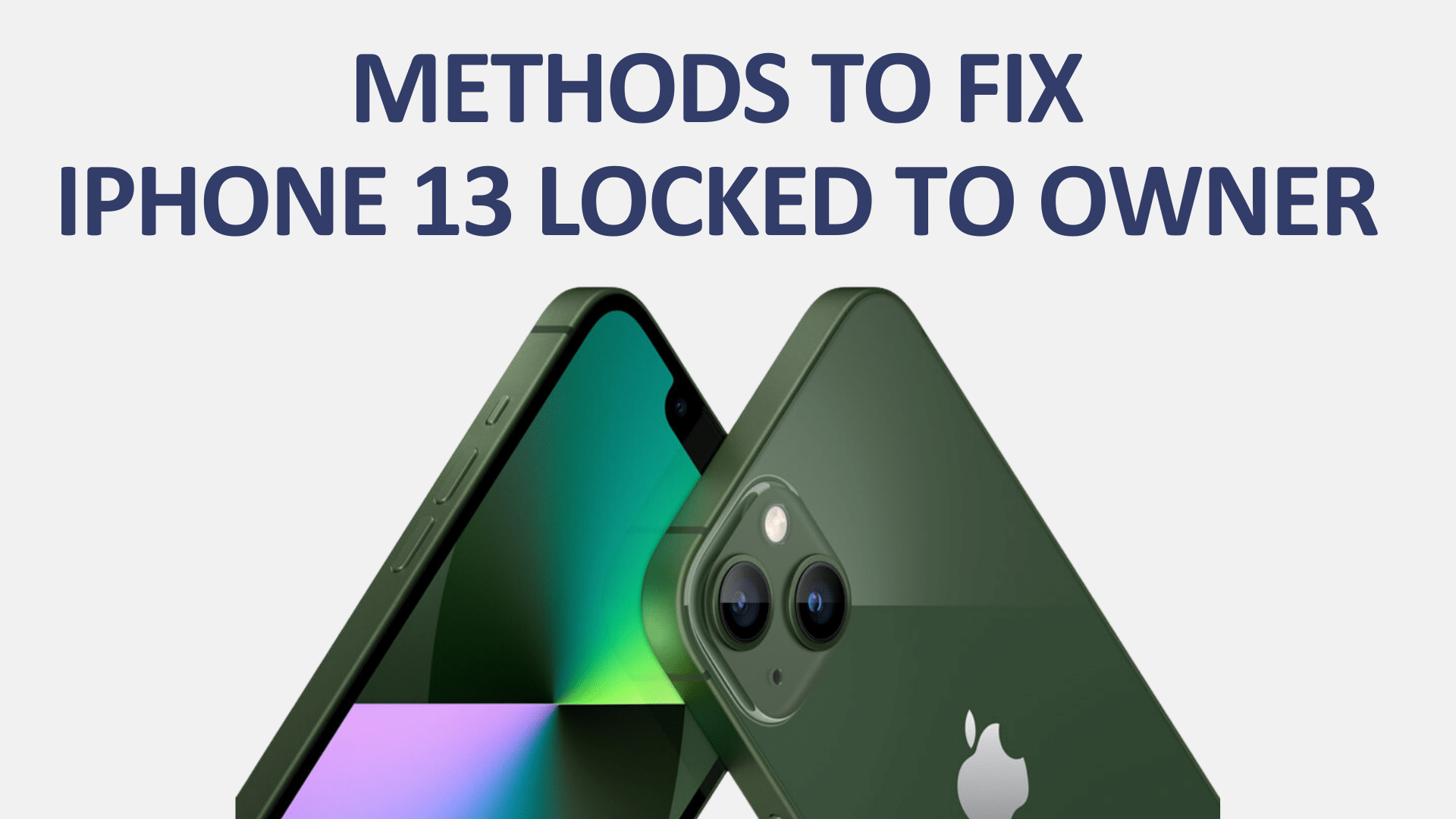
Whether you’ve got the iPhone 13, Pro, Max, or Mini, it’s a bummer when you just want to dive into your new phone and you’re welcomed with a locked to owner message on your screen. But hey, don’t stress! We’ve got a bunch of fixes lined up for you. Stick with us as we spill the beans on how to sort this out and get your iPhone 13 rocking and rolling. Let’s get that phone unlocked, shall we?
Method 1. Seek Help from the Seller
The seller might just be your first and most effective solution. It’s possible they overlooked signing out of their account or they have some insight on the iPhone 13 Locked to Owner issue that you’re unaware of. A quick chat with them might save you hours of troubleshooting.
Step 1: Gathering Your Info
First things first, gather everything you might need. This includes your device’s serial number, IMEI number, and any receipts or documentation that prove it’s yours. This will not only back up your claim but also make the whole process smoother.
Step 2: Tracking Down the Seller’s Contact
Next, if you didn’t get the seller’s contact details at the time of purchase, now’s the time to dig them out. Whether it’s an email, a phone number, or a physical address, having a way to reach out is crucial.
Step 3: Laying Out the Issue
When you’ve got a line of communication open, be clear about the problem. Let them know about the locked to owner problem and that you need their assistance to sort it out.
Step 4: Detaching the iPhone from the Seller’s iCloud
Lastly, guide the seller to remove your iPhone from their iCloud account. Walk them through these steps:
- They should head to iCloud.com, login, and select “Find iPhone.”
- After choosing the locked device, they’ll need to click on “Erase”.
- Once that’s done, select “Remove from Account.”
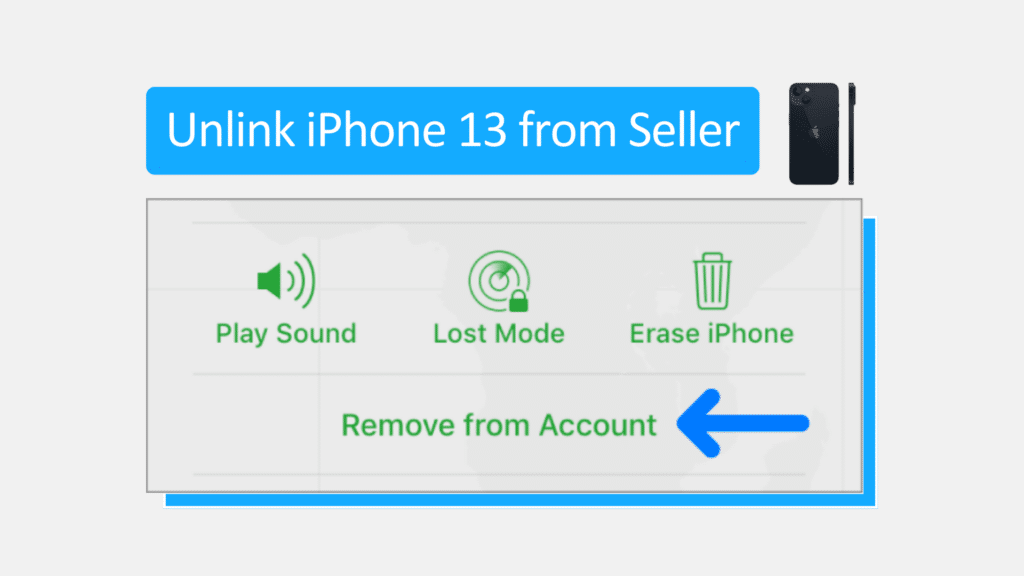
If all goes well, your iPhone should be free from its previous ties!
Method 2. Using Unlock Maker for Rapid Unlocks
Another ace up our sleeve when grappling with the iPhone 13 locked to owner puzzle is Unlock Maker. It’s not just about speed, though it certainly delivers on that front; it’s also about efficiency without costing you a dime. For everyone eager to make the most of their iPhone 13, whether Pro, Max, or Mini, this tool can be a game-changer.
Step 1: Starting the Unlock Process
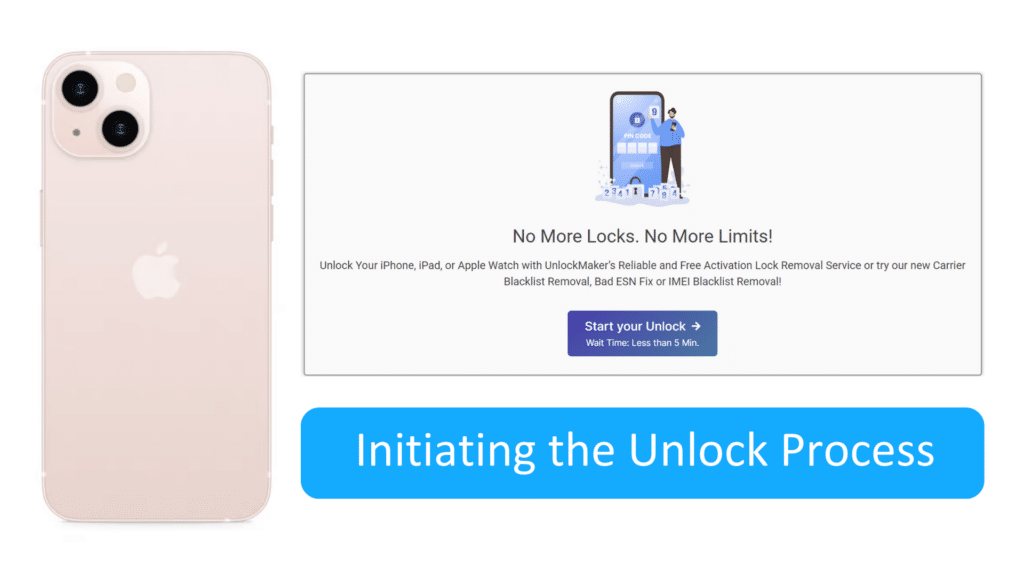
Let’s kick things off by simply hitting that inviting button below and you’ll be on your way to unlocking freedom.
Disclaimer: We do not condone using this app to remove the iCloud activation lock feature on stolen property. If you believe there’s something sketchy with an iPhone you recently bought, make sure to act accordingly and contact the authorities.
Step 2: Providing Your Information
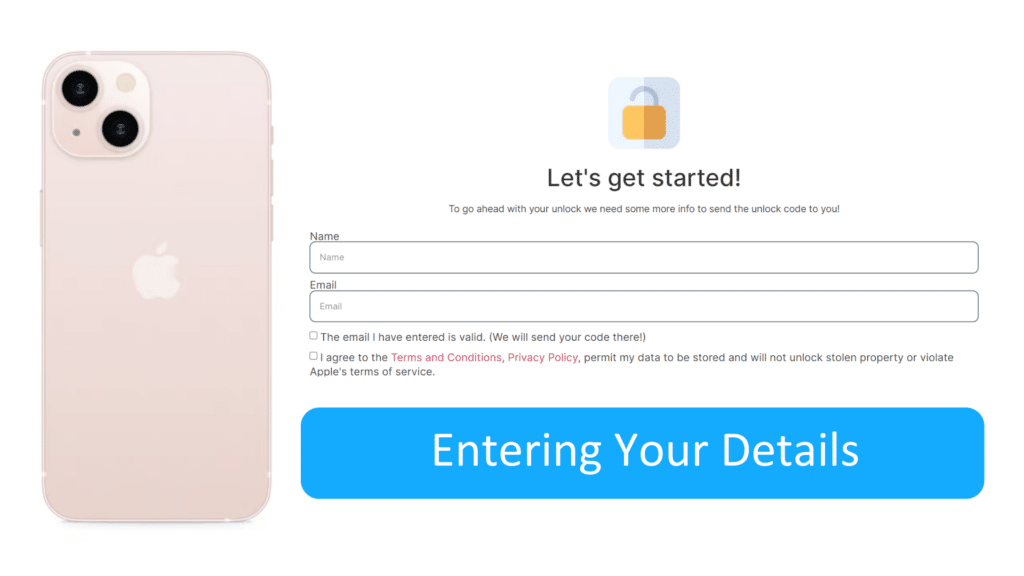
Pop in your name and email. Accuracy’s key here – this ensures you get all necessary follow-ups. And, while you’re at it, give those checkboxes a tick to confirm your email’s legit and you’re cool with our Terms and Conditions and Privacy Policy.
Step 3: Pick Your Device Type
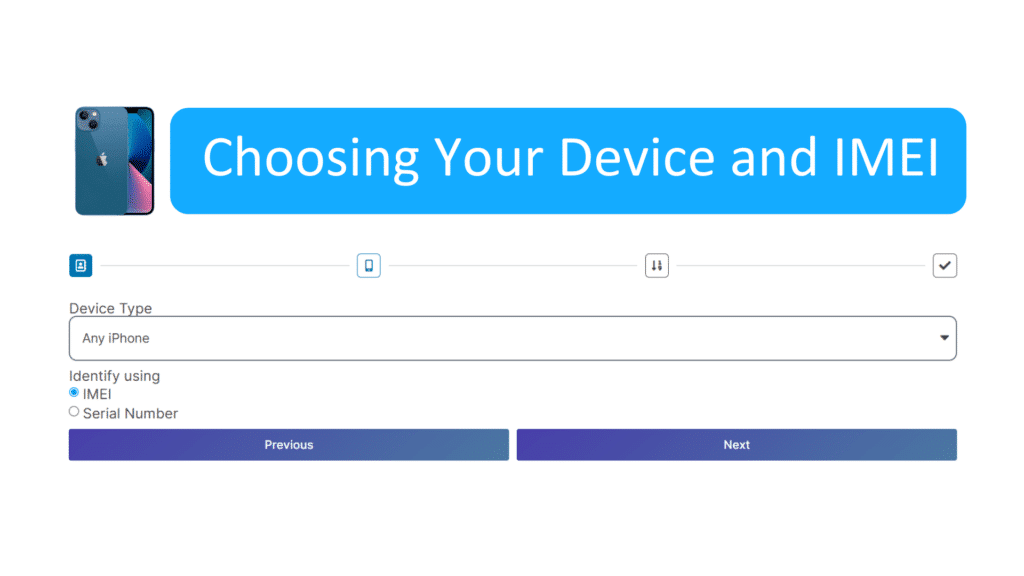
Up next, you’ll face a trio of choices:
- iPhone
- iPad
- Apple Watch.
Given our focus, go for “Any iPhone”. Just beneath, you’ll spot options for IMEI and Serial Number. For this guide, we’re all about IMEI.
Remember: All iPhones possess an IMEI, whereas only cellular-equipped iPads and Apple Watches do. Meanwhile, iPads and Apple Watches that aren’t cellular-equipped only have serial numbers. Use IMEI in this step. However, if IMEI is unavailable, opt to Serial Number.
Step 4: Submit IMEI or Serial Number
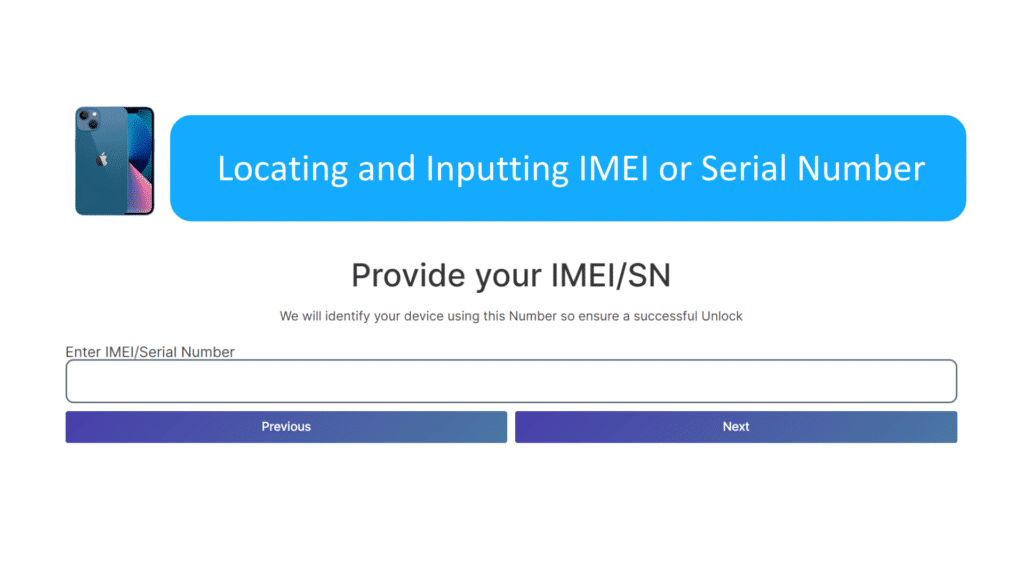
If the whole IMEI thing’s new to you, no worries. Follow the steps below to find your IMEI:
- From the iPhone’s activation lock screen, give the sleep button a push.
- Then, wake your phone, tap that little (i) at the bottom right, and voila!
Your IMEI and SN codes, right there. Jot down the IMEI, punch it into UnlockMaker, and hit next.
Step 5: Watching the Tutorial and Fetching Login Details
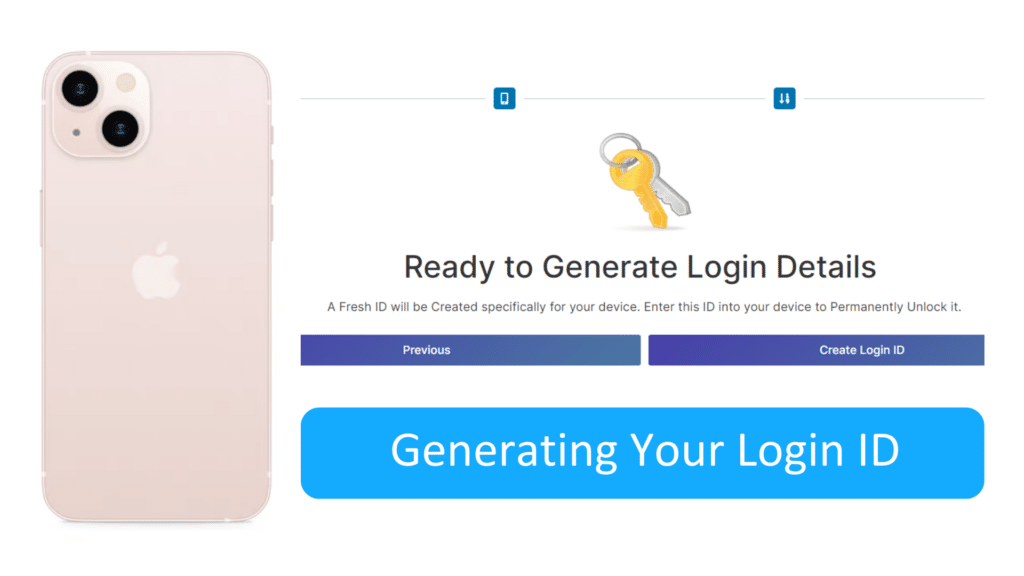
Hit that “Create Login ID” and you’re one step closer to solving that pesky iPhone 13 locked to owner problem.
Step 6: Email Confirmation
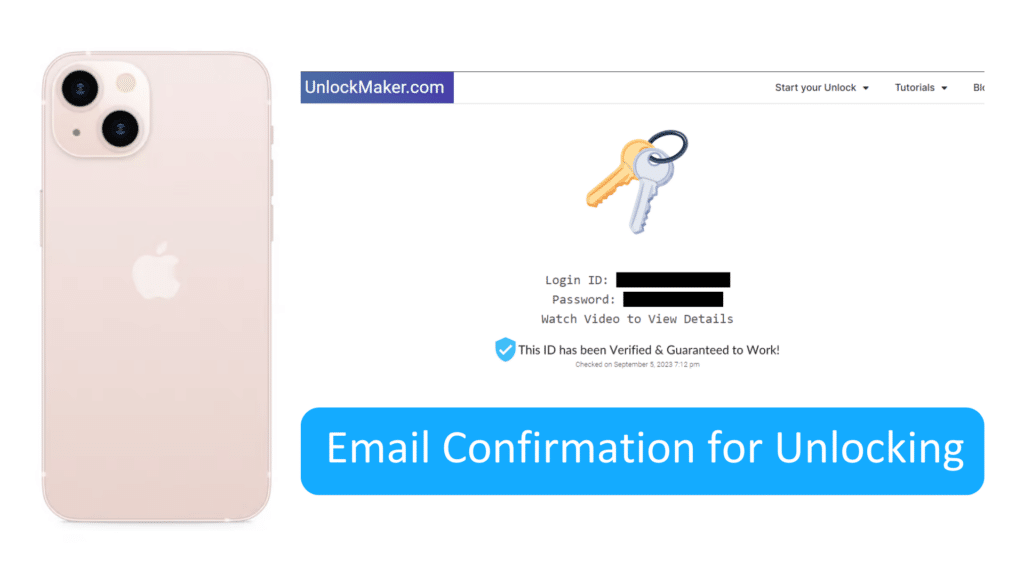
Double-check that email of yours – it’s about to play a starring role. You’ll receive crucial info here if further guidance’s needed down the road.
Step 7: Watch Guide and Download Credentials
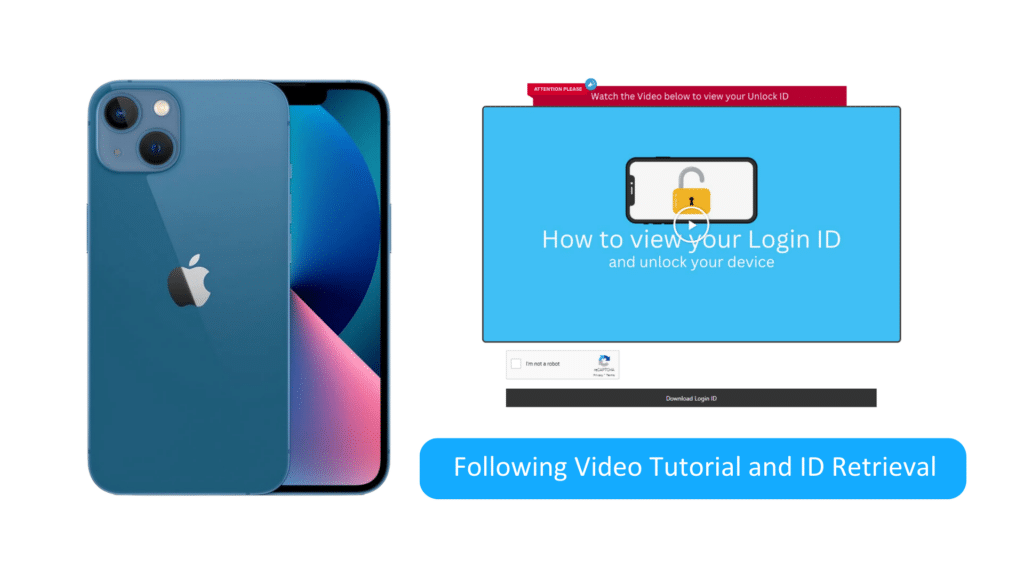
It’s important to watch the video tutorial to guide you on unlocking this ID. Pop in the CAPTCHA, tap “Download LogIn ID”, and snag that PDF. It contains the login details for your phone and once you’re done, your iPhone 13 is now like a brand-new iPhone. Update it, snag apps, make calls, and truly make it yours, no strings attached.
Tips and Precautions
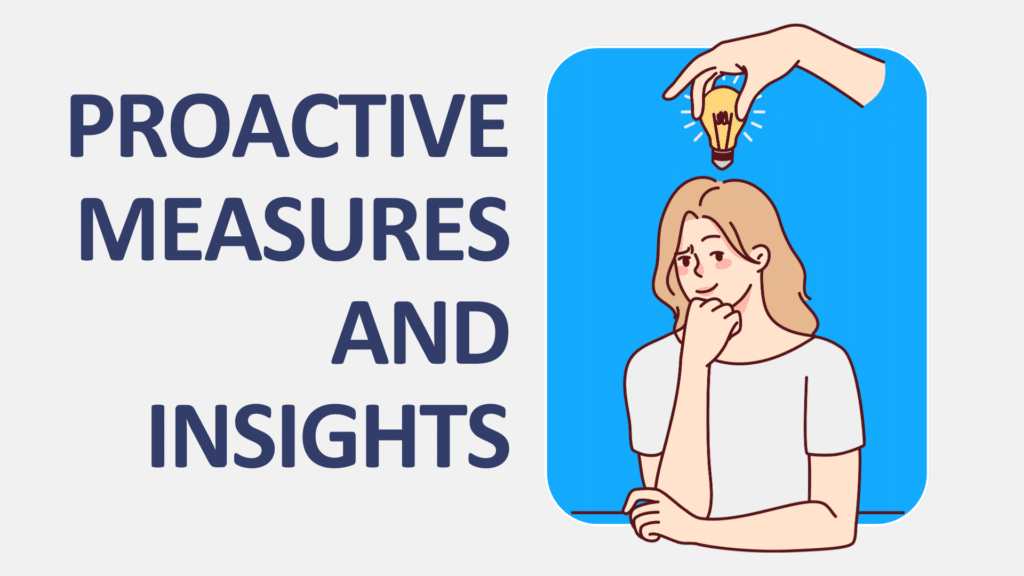
Knowing the ins and outs of your iPhone 13 is essential to ensure uninterrupted use, especially when it comes to ownership issues. Being locked out can be quite a bummer! But with a little care and the right knowledge, avoiding the pesky iPhone 13 locked to owner message becomes a cakewalk. Let’s dive into some handy tips to keep your Apple experience hassle-free.
Setting Up iCloud Correctly
When first setting up your iPhone, ensure you sign in to your iCloud account. This ties your device to your identity, making it less likely for ownership issues to arise later on.
Verifying Purchase Sources
If you’re considering buying a second-hand iPhone 13, always get it from a reputable source. Ask for any related documents and ensure the previous owner has signed out of their iCloud before making a purchase.
Regular Backups and Updates
Always backup your iPhone data regularly. This not only protects your precious memories and information but also ensures you can restore your device without locking issues if something goes awry.
Keeping Your Apple ID Secure
Your Apple ID is the key to everything on your iPhone. Keeping it secure with a strong, unique password, and enabling two-factor authentication can prevent unauthorized access and potential lockouts.